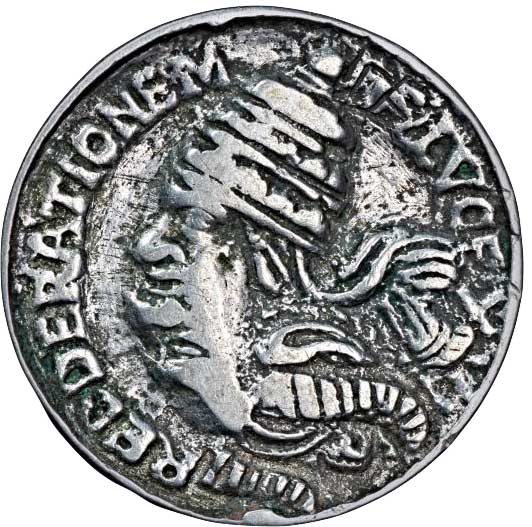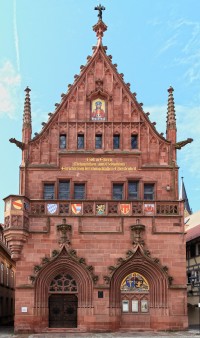Vorderseite: Doppelkopf: Papst nach links, in Gegenstellung Teufel nach rechts. Umschrift: REDDE RATIONEM – DE LVCE – X – VI (= Lege Rechenschaft ab über des Lucas [Evangelium] 16).
Rückseite: Doppelkopf: Kardinal nach rechts, in Gegenstellung Narrenkopf nach links. Umschrift: STVLTITIA – CORA – DEO (= Torheit vor Gott).
"Und er ließ ihn rufen und sprach zu ihm: Was höre ich da von dir? Gib Rechenschaft über deine Verwaltung; denn du kannst hinfort nicht Verwalter sein." Lk 16,2.
en

